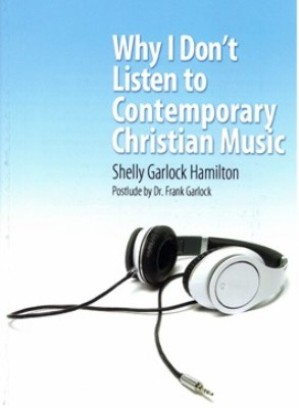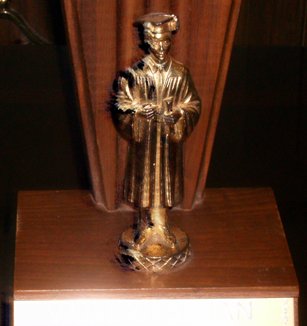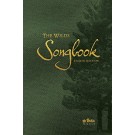Genesis 20 relates Abraham’s initial (recorded) encounter with Abimelech king of Gerar. Through studying the record of God’s confrontation of Abimelech after this encounter, we should learn how His amazing protection of this Philistine king should affect our praying.
ABRAHAM’S ENCOUNTER WITH ABIMELECH
Although this account involves God, Abraham, Sarah, Abimelech, all his servants, and even sheep and oxen, its main characters are God, Abimelech, and Abraham.
Abraham Lies to Abimelech about Sarah
Because Sarah, Abraham’s wife, was very beautiful (cf. Gen. 12:14), Abraham feared for his life as he traveled through pagan places (Gen. 20:11). He instructed Sarah to say that he was her brother (Gen. 20:13c), which was partially true because she was his half-sister (Gen. 20:12).
While they were staying in Gerar (Gen. 20:1), Abraham said that Sarah was his sister (Gen. 20:2a). As a result, Abimelech sent and took Sarah (Gen. 20:2b).
God Confronts Abimelech in a Dream
In a dream at night, God confronted Abimelech with the surety of his dying (Gen. 20:3; cf. 20:7) because of what he had done: “Behold, thou art but a dead man, for the woman which thou hast taken; for she is a man’s wife” (20:3). Abimelech, however, had not yet come near her and asked the Lord if He would “slay also a righteous nation?” (20:4).
Asking this question, he queried the Lord in a remarkably similar fashion to how Abraham had earlier pled with the Judge of the all the earth about His righteous dealings with the righteous and the wicked (Gen. 18:23-32). Through this inquiry, Abimelech asserted to the Lord that he believed that he was righteous in what he had done regarding Sarah.
Furthermore, he protested to the Lord that Abraham had said that she was his sister and that Sarah herself also said that he was her brother (Gen. 20:5a-b). Remarkably, he further asserted his uprightness in what he had done: “In the integrity of my heart and innocency of my hands have I done this” (20:5c).
God responded to him with an acknowledgement that he indeed had done what he did with integrity: “Yea, I know that thou didst this in the integrity of thy heart” (Gen. 20:6a-b). God did not, however, stop with this acknowledgement, for He added a profound revelation about His protection of him that he otherwise would never have known anything about: “For I also withheld thee from sinning against me: therefore suffered I thee not to touch her” (Gen. 20:6c-d). (Before considering this stunning revelation further, it is helpful to treat the rest of the account briefly.)
God then commanded Abimelech to restore Sarah to Abraham because he was a prophet, and informed him that Abraham would pray for him so that he would live (Gen. 20:7a). He also warned him that he and his entire household would surely die if he would not restore her (20:7b).
Abimelech Confronts Abraham
Following God’s dealing with him in a dream, Abimelech confronted Abraham about what he had done in bringing such a great sin on Abimelech and his kingdom (Gen. 20:8-10). Abraham explained that he thought that no one among them feared God and that they would kill him because of his wife (Gen. 20:11).
He added that Sarah actually was his half-sister and that she had become his wife (Gen. 20:12). He then explained the kindness that he had requested that Sarah would show him by saying that he was her brother wherever they would go (Gen. 20:13).
Abimelech Restores Sarah to Abraham
Abimelech did much more than just return Sarah to Abraham; he also gave Abraham sheep, oxen, and male and female servants (Gen. 20:14). Moreover, he gave him permission to settle in his land wherever he would like (Gen. 20:15) and 1000 pieces of silver on behalf of Sarah (Gen. 20:16).
God Heals Abimelech and His Household through Abraham’s Prayer
The account ends with God’s healing Abimelech and his entire household through Abraham’s praying for them (Gen. 20:17). They now bore children, after God had stopped closing their wombs because of Sarah (Gen. 20:18).
DISCUSSION
Several profound gems of truth are embedded in this otherwise somewhat obscure account. First, contrary to Abraham’s negative expectation, there was at least one person in Gerar (Abimelech) who did fear God and understood that it would have been sin for him to take another man’s wife. Long before the Ten Commandments had been given, therefore, even pagans knew that adultery was sin.
Second, somehow Abimelech knew and believed that the Lord was a righteous judge who would not slay a righteous nation. We are not told how this pagan king knew this information, but it is amazing that he knew it, believed it, and even appealed directly to God based on his belief of this truth!
Third, Abimelech protested to God his innocence in what he had done, and amazingly, God attested to his innocence. Yet, despite that divine attestation of his innocence, Abimelech had sinned by what he had unknowingly done.
Fourth, and perhaps most profoundly of all, this passage teaches us that God protected this pagan king from sinning against Him by keeping him from actually having relations with Sarah! We, therefore, learn that for His own purposes, God sometimes keeps even pagans from sinning against Him!
Furthermore, through God’s saying, “I also withheld thee from sinning” (Gen. 20:6), we learn that Abimelech’s not coming near Sarah was the result of both his integrity and God’s protection of him. Thus, the righteous actions of this lost man stemmed from a mysterious and fascinating interplay between human actions and divine working.
APPLICATION
The teaching of this passage suggests many applications, some of which I may treat in other posts. At this time, I would like to focus on its implications for our praying as believers.
God kept Abimelech, a Philistine, from sinning unknowingly against Him by committing adultery with another man’s wife. Because God does not tell us exactly how He prevented him from doing so, we should conclude that our knowing that information is not as important as our noting what God did on behalf of this pagan man.
On that reading, our learning about God’s keeping this pagan from sinning against Him should motivate us to pray that God would keep us from sinning against Him! I have no doubt God that would be very pleased with His people who allow this passage to shape their prayer lives in this way.
I have begun to make the request that God would keep me from sinning against Him a regular part of my prayer life and encourage you to do the same thing.
Copyright © 2011-2025 by Rajesh Gandhi. All rights reserved.







